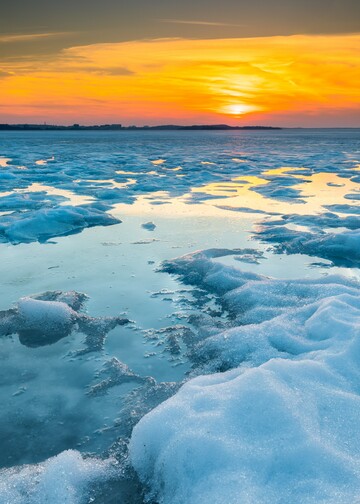What happens to the particles of a solid when it is heated?

Heating solid ice turns it into liquid water.

Heating solid ice turns it into liquid water.
Have you ever noticed that when you heat something up, it gets bigger? This is because the particles in the solid are moving faster.
When you heat a solid, you are giving the particles more energy. This energy makes the particles move faster and farther apart. The faster the particles move, the more space they take up, so the solid expands.
Let's say you have a piece of metal. When you heat it up, the particles in the metal start to move faster. They move so fast that they start to vibrate. This vibration makes the metal expand. If you heat the metal up even more, the particles will move so fast that they will break away from each other and the metal will melt.
You can see this same thing happen with other solids too. For example, if you heat up a piece of ice, the particles in the ice will start to move faster. They will move so fast that they will break away from each other and the ice will melt into water.
So, the next time you heat something up, remember that you are giving the particles more energy. This energy makes the particles move faster and farther apart, which makes the solid expand.
What happens to the particles of a liquid when it is heated?
When you heat a liquid, the particles inside it start to move even faster. The faster they move, the more space they take up and the liquid expands. Let's take water as an example. When you heat up water, the particles become very active and start moving around quickly. This movement causes the water to expand and turn into steam, which we can see as bubbles rising from boiling water on the stove.
What happens to the particles of a gas when it is heated?
When you heat a gas, the particles inside it gain more energy and move around even faster. This makes the gas expand and take up more space. Let's imagine you have a balloon filled with air. If you expose the balloon to heat, the air particles inside gain energy and move very fast. As a result, the balloon expands and may even burst if it gets too hot.
Why do liquids and gases flow but solids do not?
Liquids and gases can flow because their particles can move around each other more freely. In a liquid, the particles can slide past one another, allowing the liquid to take the shape of its container. For example, when you pour juice into a glass, it takes the shape of the glass. Gases, on the other hand, have particles that move around very quickly in all directions, allowing them to spread out and fill any space available. Solids, like wood or metal, have particles that are tightly packed and connected, so they cannot move past each other easily and cannot flow like liquids and gases.
Why do some substances float in water and others sink?
Whether a substance floats or sinks in water depends on its density. Density is how closely packed the particles are in an object. If an object is less dense than water, it will float because it takes up more space than the water it displaces. For example, a wooden block is less dense than water, so it floats. If an object is more dense than water, it will sink because it takes up less space than the water it displaces. A heavy rock is more dense than water, so it sinks.
What happens when a substance freezes?
When a substance freezes, it changes from a liquid to a solid. This happens when the particles in the substance slow down and come closer together. Let's look at water again. When you put water in the freezer, the particles inside gradually lose energy and start moving slower. As they slow down, they arrange themselves in an orderly pattern, forming ice crystals. This is why water turns into ice when it gets cold enough.
Why do objects change shape when they are squashed or stretched?
Objects change shape when they are squashed or stretched because the particles inside them get compressed or pulled apart. For example, if you squeeze a ball of clay in your hand, the particles in the clay get squished closer together, causing the clay to change its shape. On the other hand, when you stretch a rubber band, the particles in the rubber band get pulled farther apart, making it longer. So, depending on how you apply force to an object, the particles inside can either become more closely packed or spread out, resulting in a change of shape.

Heating solid ice turns it into liquid water.